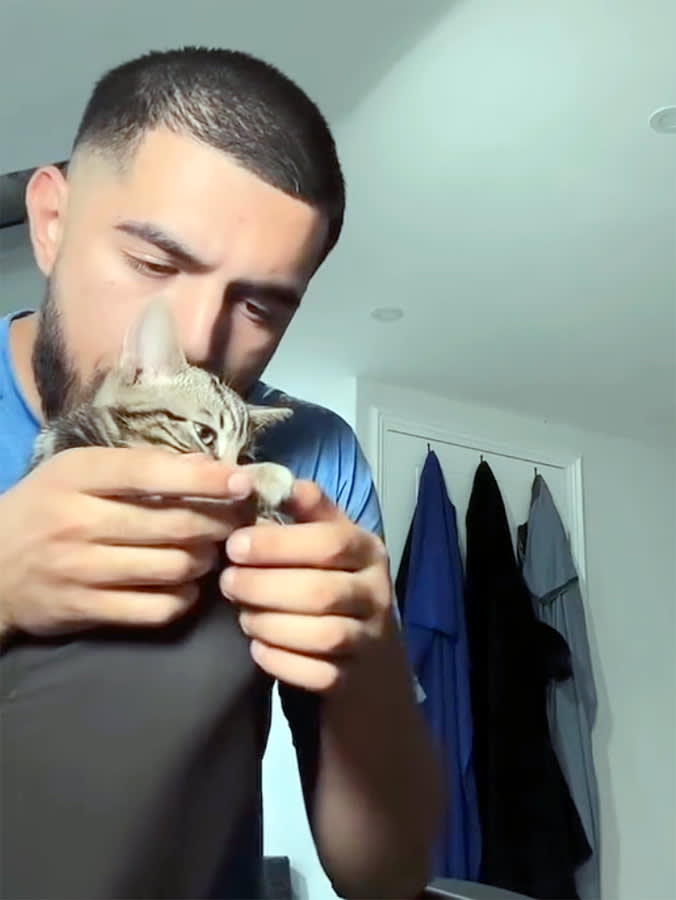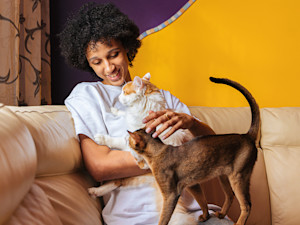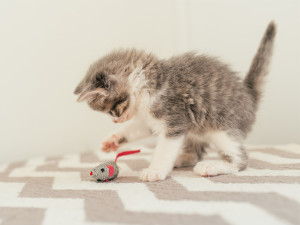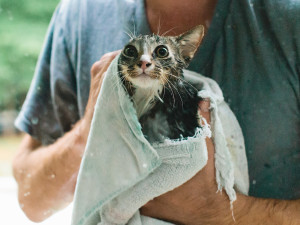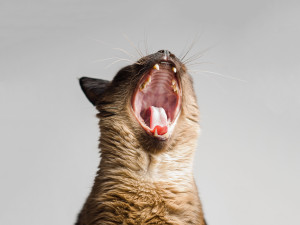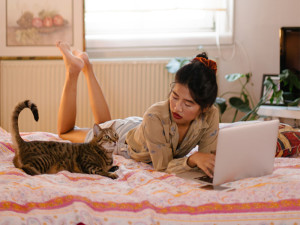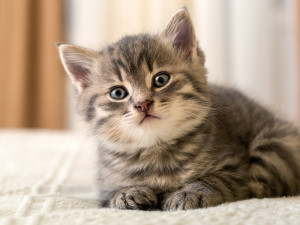Cutting Cat Nails Is Hard, Is This Unusual Viral Hack The Answer?
We asked a behaviourist if this content creator’s approach to cutting his kitten’s nails is something you can try at home
Thought you’d seen every cat video the algorithm could possibly throw at your feed? Well, prepare yourself for this. In his latest offering, content creator Ish @isheverythingopens in new tab tries out an unusual way to get his kitten Fifi to let him clip his claws. Before we dive in, let’s take a moment to note that the care Ish lavishes on his kitten is enough to make your heart melt – these two are very much the delightful twosome. But is this move safe to try at home?
“Guys, I’m gonna try and clip Fifi’s nails again,” Ish begins, but “I’m gonna try something different”. Ish moves the camera to Fifi who’s asleep with his paws in the air (adorable). “Why do you sleep like a human?” Ish gushes, as he nuzzles into Fifi’s fur. Fifi is popped on a table where, Ish says, he’s determined to cut his kitty’s nails, which have got so long they leave marks on Ish’s body. Ish has watched a video of a human owner biting their cat’s neck – yes you read that right – to clip their claws and he’s going to recreate it, “He’s gonna think I’m his mum…”
Get (totally free) deals for food, treats, accessories, tech and way more pet parenting must-haves.
“As soon as you hold their neck, they’re literally calm,” says Ish. “Don’t judge me, this is my son, bro,” he continues before putting Fifi’s neck in his mouth. Usually Fifi wiggles and moves and tries to escape, but this time he stays completely still while Ish clips away.
You’ve probably got some questions. What have you just seen? Is this a fluke? Is Fifi OK with this? Will it work on any cat who usually hates their claws being clipped? Is it safe? To find out, we got in touch with one of the UK’s leading feline behaviourists Lucy Holieopens in new tab, author of The Book Your Cat Wishes You Would Read: The must-have guide for cat loversopens in new tab, to get the intel.
Unfortunately, Lucy says this is probably not the best way for humans to handle cats. It puts both feline and human at risk – you might get scratched in the face. “Yes mothers hold their kittens by the scruff of the neck to safely transport them when necessary,” she explains, but it’s not a comforting action, it’s more about practicality. “It makes evolutionary sense that kittens go limp in this situation, so the mother can move them easily.” This usually only happens for the first few weeks of a kitten’s life, warns Lucy, “any later and the risks outweigh any potential benefits”. An older cat, for example, is much heavier so their neck and the skin around their neck will not be able to support them.
Holding or restraining a cat by using your hand to hold the scruff of their neck is an outdated method, according to Lucy. Yes, it’s a way to get them to do something they hate – for example, a medical examination at the vet’s or lifting them into a carrier – “but it’s now strongly advised against within the veterinary community”, says Lucy. This is because this kind of hold takes control away from your cat, which in turn could cause them to become anxious or stressed – especially if they are already in a situation they’re uncomfortable with. “Then, if they struggle to get away, it can result in pain and discomfort as the person will have to make their grip tighter,” explains Lucy.
So, is Fifi OK? “This particular kitten doesn’t look distressed, but he’s still young and doesn’t seem to be experiencing any physical discomfort,” observes Lucy. Fifi still has the reflex of going limp, so has responded in that way. It’s neither a positive nor a negative reaction, according to Lucy. “As far as I know, there would be no emotional response,” she continues, “it’s merely a practical way for mothers to move their kittens around.” We reached out to Ish to get his take but haven’t heard back, no doubt he’s busy having more adorable adventures with Fifi.
But just because mother cats use this technique, it doesn’t mean humans should do it to their own fur babies. Although Fifi seems fine, it’s important to remember that all cats are unique and react in different ways to touch. Perhaps they’re sensitive or fearful of people, for example, so being held in this way by a human could invoke a negative emotional response. Then there’s cats who adore people and affection who might enjoy it. But that doesn’t mean it’s appropriate, heeds Lucy, who suggests other ways to interact with your cat: “They get comfort from cuddling up, sucking, kneading with their paws, purring and grooming each other, for example.”
So, what’s a safe and practical way to get your feline friend to do the things they hate? Here’s the hard truth: “Having any sort of procedure done usually involves some degree of discomfort,” says Lucy. “And the best way to reduce that is by getting your cat used to this sort of handling when they’re young, so they aren’t worried about it.” First up, pair just the sight and sound of the clippers with your kitten’s favourite treats, before slowly building up to gently handling their paws. The key is to go slow and have lots of breaks.
But what if you urgently need to clip their claws or you have rescued an older cat? Although it’s not necessarily a comforting action, “Wrapping your cat in a towel is much more appropriate than scruffing or biting the neck as it removes any pain and reduces the risk to the person,” explains Lucy. “And if you can’t do that, ask for help from a vet or registered vet nurse.”
OK, so no one should try putting their cat in their mouth? “No,” says Lucy simply. And if anyone’s still concerned about Fifi, “By the look of it, that kitten is comfortable being cuddled and has a good relationship with Ish,” says Lucy. Phew, don’t try it at home.
